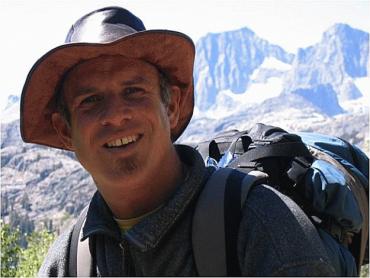
By Jonathan Morales
Contra Costa Times
Bill Hudson knew a major California environmental problem could be coming, literally, to his backyard.
The Orinda resident has a number of oaks on his property, so when he learned sudden oak death had crept over the Berkeley hills and into Contra Costa County, he decided to do something.
That's when he hooked up with UC Berkeley professor Matteo Garbelotto, who gives concerned residents such as Hudson the chance to help fight a tree-killing disease that has moved up and down the California coast.
Garbelotto organizes what he calls "SOD blitzes" in which volunteers scour their communities for signs of sudden oak death, helping researchers understand just how far the disease has spread.
"I'm concerned about it," Hudson said. "It's an important problem. (Garbelotto) needed some help and he's doing a lot of good work on it."
Garbelotto has organized several such blitzes each of the past two springs, and has several scheduled this April and May, including one in the East Bay later this month.
Sudden oak death was first introduced to California in Marin County in 1995, Garbelotto said. It has spread as far south as Monterey and as far north as Humboldt County, and even into parts of Oregon.
Several plants, like the California bay laurel, can carry sudden oak death but remain unaffected. It is often spread to oaks through rainwater that has come into contact with infected plants.
Because the area it affects is so large and, in many cases, economically unproductive, it's difficult to find funding for sudden oak death research, Garbelotto said.
Enter his army of volunteers.
They first head to UC Berkeley to learn which plants to examine and how to identify the disease. Then they spend the next couple of days collecting samples and returning them to Berkeley for testing, which is usually completed by October.
The process is by no means comprehensive, or even scientific. But Garbelotto said the volunteers' efforts are helpful because information on the disease's spread can lag.
"If you were to think, 'Oh, I know where sudden oak death is' and you're using data that was produced two years ago, probably you actually don't have a good idea where it is," he said.
The blitzes also benefit property owners by letting them know if their trees are infected. If detected early, Garbelotto said, there's a chance a property owner can rid the tree of the disease.
Hudson, the Orinda resident, admits he's helping out not just out of concern for the environment, but for his property, as well.
"I've got my own trees in my neighborhood, and that's where it impacts, so it's a mutually beneficial thing," he said.
Sudden oak death's impact stretches far beyond just the trees it infects, said Katie Palmieri, a spokeswoman for the California Mortality Task Force.
"You're losing food sources for the animals that live there, you're losing shade and screens in your urban-wildland interface area," she said. "It can impact water runoff qualities into the streams with soil erosion becoming more common."
Garbelotto said it's unusual for ordinary people to be able to get involved at the local level in battling what is very much a regional problem.
But when they do, he added, it amplifies the concerns already expressed by researchers, helping those concerns to be heard by government officials with the power to enact policies aimed at curbing the diseases's spread.
"Obviously the voice is heard," Garbelotto said, "not just (by) myself and a couple of other scientists, that this is important."
